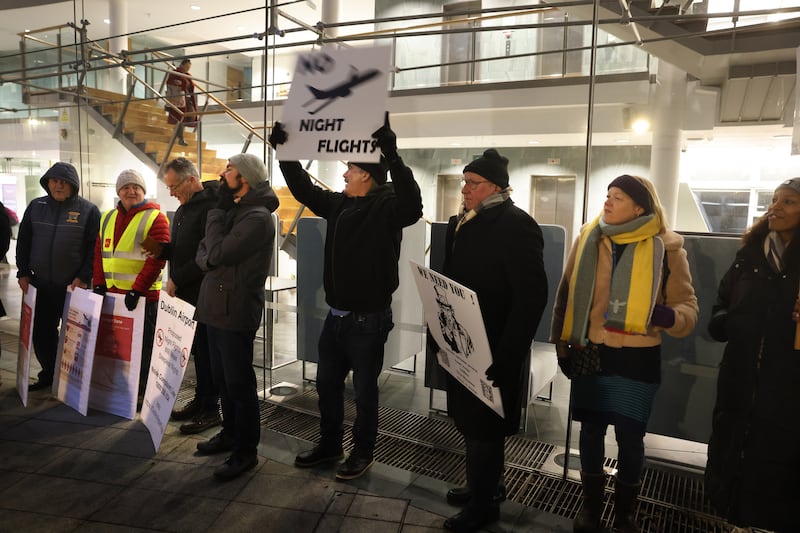Mary Bryllert’s son Marcus will often tell her about being unable to hear his teacher in class because of the recent arrival of loud, relatively low-flying aeroplanes passing over Rolestown National School in north county Dublin.
“I’m living in the area all my life ... I’m used to planes going over; I’m used to them at an acceptable height,” she said outside Fingal County Council during a protest against the airport’s problematic north runway on Monday night.
“It was part of my childhood. But now at this low altitude it’s horrendous.” She has measured 86 decibels, she said, and talked about vibrations from the jet engines that rival noise issues.
The demonstration, organised by St Margaret’s The Ward Residents Association, one of many affected areas, was full of people talking about decibel measurements and telling similar versions of the same story.
Dave Hannigan: Sad spectacle as Marion Jones bids to rebuild her ruined brand
‘I’ve been blind to the fact that my partner is actually married to his mother’
Gordon D’Arcy: Six Nations has brought rugby incredible growth but we must tread carefully
Teeth grinding and clenching can have more serious effects than annoying your bedfellow
They claim planes have been using flight paths, since the runway opened last August, that diverge from those that had received planning. DAA, which runs the airport, has conceded there is a problem and is carrying out a review, but the protesters are seeking enforcement action from the council’s planning department.
“The community is up in arms,” said Liam O’Gradaigh who helped organise the demonstration. “We’ve got nursing homes being directly overflown, no protection for those vulnerable people. We’ve got national schools and playschools.”
[ ‘Really, really loud’: The village disrupted by Dublin Airport’s new runwayOpens in new window ]
The protesters chanted for action and held placards saying “I can’t hear my teacher” and “All I want for Christmas is a silent night’s sleep”.
“It’s very stressful, a lot of anxiety. The kids, you can’t get used to noise like that,” said Niamh Maher, a mother of two from St Margaret’s who worries about not being able to use their garden.
“The very large jets, going to the United States or whatever, when they fly over the house, the whole house is nearly shaking,” she said.
“It’s not like an earthquake but definitely if you put your hand against the windows you can feel the vibration going through you. If you’re out in the garden you can actually feel the vibration from just the air around you because they are so close, it’s the jet force coming back.”

One resident held up a large chart which, he claimed, showed the difference in permitted flight paths and the ones being used, which turn sharply right off the runway before beginning a noisy ascent over populated areas that had never expected any disruption.
DAA has admitted some local communities were being “unexpectedly overflown”, but has not commented on specific claims that flights are breaching planning permission.
However, moves to tweak so-called standard instrument departures (SIDs) are under way with hopes the situation can be resolved sometime within the first quarter of 2023.
[ Noise pollution threatens survival of more than 100 species, study findsOpens in new window ]
That position has done little to calm the nerves of homeowners who now fear significant numbers of night-time flights next year. In January, An Bord Pleanála is due to make a ruling on whether runway operations can be extended.
“This has been the most unexpected, stressful situation that I have ever, ever experienced,” said Georgina Gaughan who lives about 8km from the runway.
“They are down so low that I felt like we could literally hit a golf ball and hit the bottom of them. I’m calling it a crisis because it is a crisis. We have a house but right now the DAA are taking away our home.”











